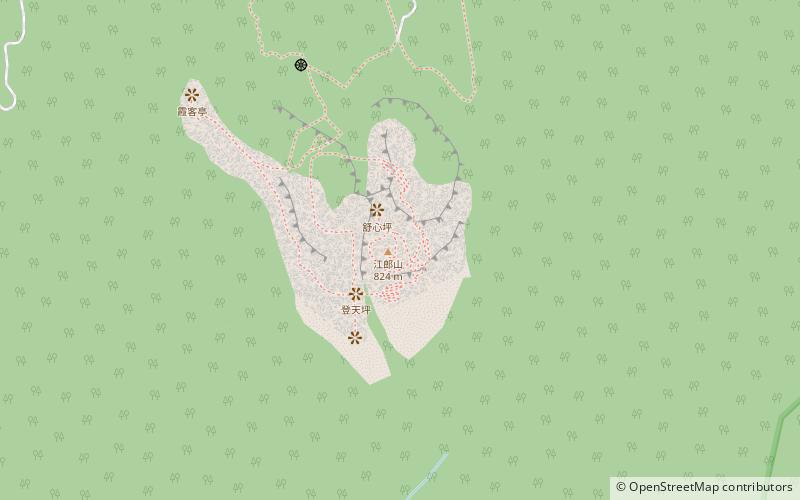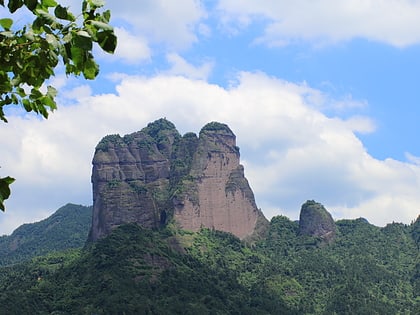Mount Jianglang


Facts and practical information
Mount Jianglang, China, stands as a majestic natural wonder in the Zhejiang Province, renowned for its three imposing peaks that soar into the sky, pushing the boundaries of the natural landscape. This mountain, a UNESCO World Heritage Site, is celebrated for its dramatic vertical cliffs and towering stone pillars that captivate climbers and tourists alike.
The formation of Mount Jianglang dates back hundreds of millions of years, a testament to the enduring power of nature's artistry. The mountain's most famous features, the three peaks known as Langfeng, Lingfeng, and Yaofeng, rise abruptly from the ground, with the highest peak reaching an impressive height of over 1,000 meters. These peaks are not only a sight to behold but also play a significant role in the local culture and spirituality, often featured in ancient folklore and regarded as a symbol of fortitude and resilience.
Mount Jianglang's unique geological structure is a paradise for geologists and nature enthusiasts. The area is characterized by its karst formations, which have been shaped and molded by natural forces over millennia. The mountain's steep inclines and challenging terrain make it a popular destination for hikers and rock climbers seeking to test their limits amidst breathtaking scenery.
Visitors to Mount Jianglang can explore a range of scenic spots, including the One-Line-Sky, a narrow crevice between two cliffs that offers a sliver view of the sky above, and the Immortal's Cave, where one can marvel at the intricate stalactites and stalagmites. The surrounding bamboo forests and clear streams add to the serene beauty of the area, providing a tranquil escape from the bustle of city life.
Mount Jianglang is not just a natural spectacle; it also plays a crucial role in biodiversity conservation. The area is home to a diverse range of flora and fauna, some of which are rare or endangered, making it an essential site for ecological research and preservation efforts.
Zhejiang
